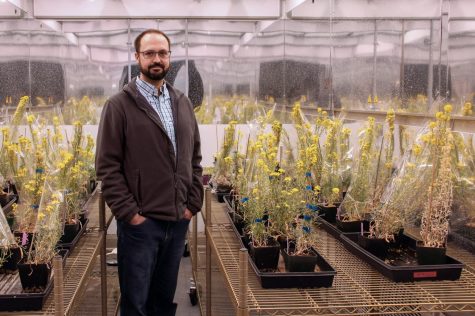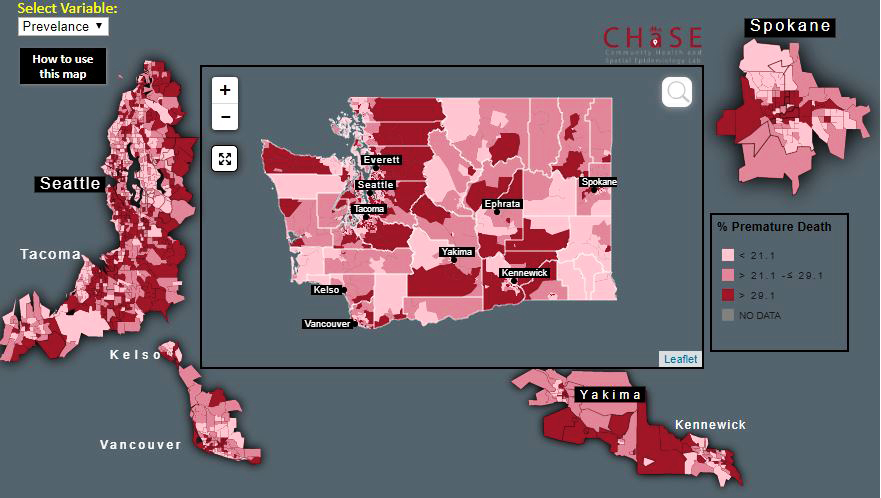WSU researchers link mortality, race
White people tend to see fewer premature deaths than non-white people
This map of Washington shows the percentage of premature death for each county. At a glance, counties and districts with darker shading experience a greater number of premature deaths than those with lighter colors.
WSU researchers discovered that premature mortality in Washington is strongly connected to race and socioeconomic deprivation.
Pablo Monsivais, WSU associate professor in the Department of Nutrition and Exercise Physiology, said premature death is more likely to occur for non-whites and people living in poorer communities.
“We discovered if you are from a certain racial group, for example — Pacific Islander — and also living in poverty, the likelihood [of premature death] bloomed,” he said.
Monsivais said the studies show when race and socioeconomic deprivation come together, they can produce much bigger gaps in health than either of those things on their own.
Justin Denney, WSU associate professor of sociology, said it is important to look at why some communities are worse off in terms of having a good quality of life.
Denney said people can always do things to improve their health such as eating a good diet, but wanted to focus on factors contributing to poor health that are out of individuals’ control.
Monsivais said this research took about 18 months.
“We put in a request to the state of Washington’s Department of Health to get data on the deaths of Washington residents,” he said. “We had to get the data, do the study, get the data released, analyze it, and write it up.”
Monsivais said they started this study in early 2018 and had to adapt throughout the research and data analysis process.
“I work with a team of people who have many different backgrounds,” he said. “I work with sociologists and a health geographer and we had to work together to develop our analysis.”
According to the published study, a total of 242,667 deaths were recorded and 57,096, about 23.5 percent, were premature.
Denney said since the release of this data, the research has been used in publications. One of which is titled, “Characteristics of place and the rural disadvantage in deaths from highly preventable causes.”
“[This shows] the deaths among people living in rural communities are the most preventable,” he said.
The complete report provides an interactive map for viewers to see the prevalence of premature death throughout Washington.
Kaitlyn Tejero is a freshman majoring in journalism and media production from Denver, CO.




















Tim Haight • Jan 30, 2020 at 4:52 pm
A lot of the conclusions may be false. In the case of the areas around Hanford near the Tri-Cities (Benton and Franklin counties), is it possible the early deaths could be related to being exposed to radiation.
King County is home to Boeing, There may be a lot of exposure to carcinogens due to the manufacturing. Could this possibly account for the high amount of what you call early deaths, and not your preconceived outcome of it due to being a minority?